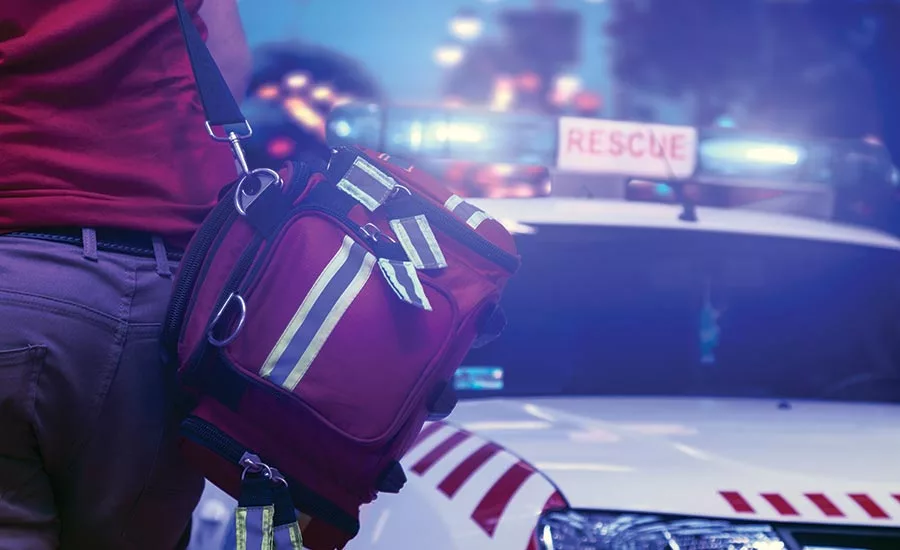Every connectivity lesson shapes a life in public safety

Technology is a vital aspect of public safety worldwide, and this trend is only likely to grow substantially in the foreseeable future. For new devices to work effectively, full-scale coverage must be in place, and when it comes to people’s safety, there is no room for downtime. Therefore, reliable connectivity is crucial for a rapid, real-time response anytime, anywhere. With experience in uncompromising environments where every second counts, below are Rajant’s words of advice for the public safety sector when dealing with connectivity and bandwidth needs.
- Rapid deployment is a must
No matter the circumstance, protecting the public is the number one priority, and emergency response teams worldwide need the highest quality equipment available to achieve optimum results. In today’s climate, much of that equipment relies on connectivity, particularly surveillance equipment. Real-time, reliable, full coverage surveillance is crucial for keeping the public safe.
As a result, wireless infrastructure must be deployed rapidly to provide public safety organizations with the connectivity they need to protect the public, personnel, and even property, when and where they need it. With so much to focus on when keeping the public safe, for first responders, emergency response teams, and other public safety personnel, reliable communication should not be a concern or compromised.
- Unfailing connectivity means everything
Reliable connectivity solutions are being embraced across the emergency services sectors due to the innumerable benefits they bring to ensuring the public’s safety. For police, firefighters, and emergency units, dependable connectivity allows for rapid, real-time response. The use of technology can save lives in ways that wouldn’t have seemed possible a decade ago.
Connectivity not only brings public safety workers the visibility they need to identify potential threats and issues early but in emergencies where anything can happen, having this connectivity is crucial to ensure public safety organizations can respond immediately. Therefore, companies must adopt high-performance, high-quality, and long-life solutions that enable seamless operational connectivity.
- Constant visibility and high-level security is essential
Continuous visibility is a top priority when it comes to protecting the public and saving lives. The benefits of enhanced visibility range from providing first responders with a clear picture of the situation they are about to encounter; to providing greater safety during public events by enabling officers to control crowds and manage traffic effectively.
In recent years, drones’ commercial use for surveillance and aerial photography and videography has increased to allow for constant visibility. Although it may bring positives, it also comes with challenges. To provide an example, some drones are based on simplistic computing architectures that are not designed to be highly secure, making them vulnerable to even average-caliber hackers. Suppose the drone is running on an inadequately secured wireless network. In that case, the hacked drone can cause network interference, which could have detrimental effects on the success and overall efficiency of emergency service operations. Equally, the drones would be collecting and storing highly sensitive data locally, which means anyone could access the memory element inside it and view this data.
The emergency services deal with a vast amount of private information and cannot afford to be publicized. Making sure the network is secure is crucial, so that equipment can be used without any potential risk.
- Use a wireless mesh network for responsive scenarios
An agile and robust network can provide operators with broadcast telemetry, and video live directly from the scene of incidents to offsite command centers to deploy necessary levels of resources and personnel. Emergency service teams must have access to a wireless mesh network to ensure they did not encounter a single point of failure throughout the network. Operators will also have access to multiple radios, multiple links, and various frequencies with a mesh network compared to Point-to-Point and Point-to-Multi-Point network architectures.
Transmission of security and surveillance monitoring data can be achieved with a network that provides high throughput and low latency for emergency service teams to function optimally across complex environments. This brings public safety workers the visibility they need to identify potential threats and issues early. In emergencies where anything can happen, having this connectivity is crucial to ensure public safety organizations can respond immediately.
Furthermore, deployment of an agile, reliable wireless mesh network can be achieved swiftly as it does not require a team of network engineers. Reducing set up and maintenance times allows emergency service personnel to focus on where they are needed most. They must have access to a network that can provide resilient communications 24/7, 365 days a year.
- Every second shapes a life
As we have seen, due to the uncertainty caused by the current global health crisis, our lives can, and do, change rapidly. In fast-moving and high-risk environments, maintaining a level of connectivity that will allow for accessing and sending large amounts of data from any location and in real-time is a significant task. Furthermore, this connectivity needs to meet stringent requirements of public safety organization and can be installed quickly and effortlessly.
Organizations must respond to emergencies effectively – a capability for which a wireless mesh network can play a decisive role. Time is always of the essence. To respond rapidly to unfolding events, selecting the most suitable connectivity choice available to public safety teams is of mission-critical importance.
Looking for a reprint of this article?
From high-res PDFs to custom plaques, order your copy today!






